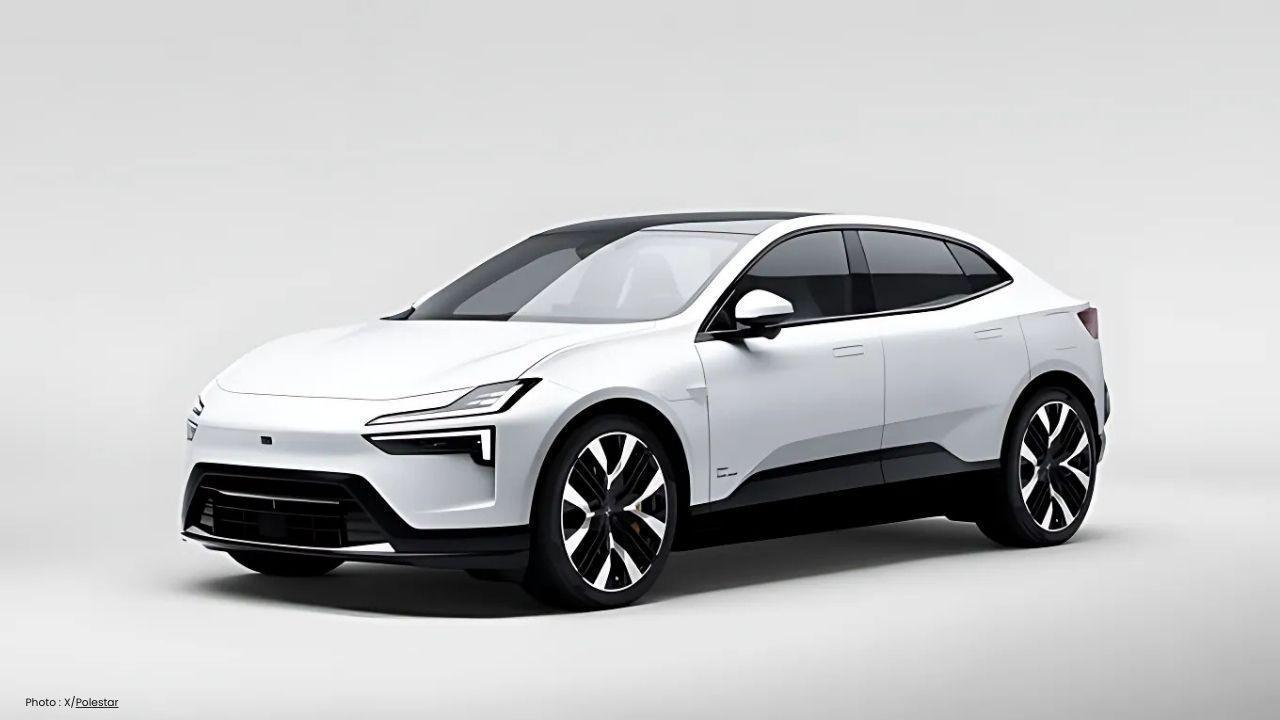
Post by : Avinab Raana
When Polestar unveiled the Polestar 4, its daring design decision instantly ignited debate: the car has no rear window. Instead, a high-resolution camera mounted on the roof feeds a live video stream to a digital rearview mirror. For a tradition-bound industry, it was a shock. Yet what many critics assumed would be a dealbreaker is turning into one of the vehicle’s most talked-about strengths. Company executives confirm that most drivers not only get used to the system but soon begin to prefer it over conventional glass.
Polestar’s design team wanted more than sleek styling; they sought to redefine space and visibility. By eliminating the rear window, the roofline could extend further back, enhancing aerodynamics and giving the SUV coupe a striking, uninterrupted silhouette. Rear passengers benefit too, enjoying larger side glass panels and panoramic roof views without the obstruction of a sloping rear hatch. The digital mirror provides a field of vision wider than most traditional windows, bypassing the common problem of blocked views from tall passengers, bulky headrests, or luggage stacked high.
At first glance, the absence of a physical window feels disorienting. Drivers accustomed to glancing at glass must retrain themselves to trust a screen. But the high-definition feed delivers clear imagery day or night, often with greater range than the human eye can naturally perceive through a narrow opening. Importantly, the mirror retains dual functionality: it can be switched back to a reflective surface if the driver prefers, though in that mode the view is limited to the cabin rather than the road.
Initial skepticism was strong. Car enthusiasts questioned whether customers would tolerate losing a basic feature like a rear window. However, surveys and feedback reveal a surprising outcome: the majority of buyers adapt within days. Many report that the digital mirror eliminates blind spots and offers confidence during nighttime driving. While a minority still express discomfort, particularly in tight parking scenarios, overall acceptance is high, proving that bold innovation can reshape user habits faster than expected.
The change isn’t just about style or novelty. Removing the rear window also reduces weight, eliminates the need for a rear wiper, and simplifies structural engineering of the hatch. Fewer moving parts mean fewer potential maintenance issues. Aerodynamics improve slightly, contributing to efficiency, while the integrated technology underscores Polestar’s push toward digital-first, minimalistic interiors.
Of course, no innovation is flawless. Some drivers find it harder to judge distances using a screen instead of direct sight. In certain conditions, like heavy rain or snow, concerns arise over whether the camera lens could be obscured. Polestar addressed these issues by designing protective housings and optimizing lens placement to keep visibility clear. Even so, it introduces a new dependency: if the camera fails, drivers lose their rearward perspective entirely. That reliance on technology, for some, remains a psychological barrier.
The electric SUV segment is filled with competitors offering similar performance and range, so differentiation is vital. By removing the rear window, Polestar ensured its 4 would not blend into the crowd. The move was deliberately polarizing, an attempt to create a talking point that sparks curiosity and sets the brand apart from rivals like Tesla, BMW, and Mercedes. It’s a strategy that appears to be working, as buzz around the feature has fueled attention, showroom visits, and sales momentum.
Early sales figures show that the controversial design has not slowed demand. On the contrary, Polestar’s retail deliveries are climbing, suggesting that customers are either unbothered by the missing window or actively attracted by the futuristic feel. For a brand still carving its identity in the EV space, that is no small victory. Polestar has positioned itself as a risk-taker, and in this case, the gamble is paying off.
The success of the Polestar 4 raises broader questions about where automotive design is headed. As digital solutions replace physical components, traditional cues such as grilles, gauges, and now windows may fade away. Other automakers are likely watching closely. If consumers embrace camera-based systems here, expect to see more models following suit. Just as digital dashboards and touchscreens are now mainstream, digital rear visibility could become a new norm in electric vehicles.
The Polestar 4 demonstrates how quickly car design can evolve when technology and bold vision converge. What once seemed unthinkable removing a rear window has become an accepted, even celebrated, feature. Drivers may still argue about its practicality, but the conversation itself is proof of its impact. By challenging conventions, Polestar has turned a design controversy into a statement of identity. For many buyers, the Polestar 4 isn’t just another EV; it’s a glimpse into the future of how cars might look and feel.
#trending #latest, #Polestar 4 rear window, #digital rearview mirror success, #EV design controversy, #Polestar customer feedback










Advances in Aerospace Technology and Commercial Aviation Recovery
Insights into breakthrough aerospace technologies and commercial aviation’s recovery amid 2025 chall

Defense Modernization and Strategic Spending Trends
Explore key trends in global defense modernization and strategic military spending shaping 2025 secu

Tens of Thousands Protest in Serbia on Anniversary of Deadly Roof Collapse
Tens of thousands in Novi Sad mark a year since a deadly station roof collapse that killed 16, prote

Canada PM Carney Apologizes to Trump Over Controversial Reagan Anti-Tariff Ad
Canadian PM Mark Carney apologized to President Trump over an Ontario anti-tariff ad quoting Reagan,

The ad that stirred a hornets nest, and made Canadian PM Carney say sorry to Trump
Canadian PM Mark Carney apologizes to US President Trump after a tariff-related ad causes diplomatic

Bengaluru-Mumbai Superfast Train Approved After 30-Year Wait
Railways approves new superfast train connecting Bengaluru and Mumbai, ending a 30-year demand, easi